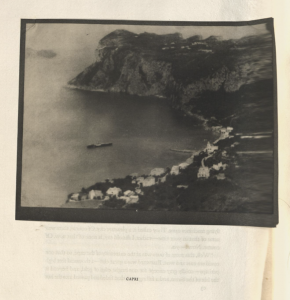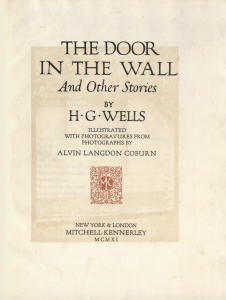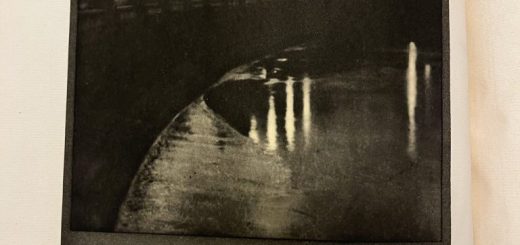A Picture is Worth a Thousand Words: “The Door in the Wall and Other Stories” by H.G Wells by Zineb J.
“The Door In the Wall and Other Short Stories” is a collection of stories including “A Dream of Armageddon” read in class. This piece by H.G. Wells is published by Mitchell Kernnerley who is an English born American Publisher. The date of publication is present with the roman numerals “MCMXI” which translates to 1911. One can also tell that the collection of short stories is old due to the physical condition of the book. It is hard to tell what the material is but I am assuming it is leather. It is not common for book covers nowadays to have just plain leather bound covers with only the book title and authors. Most books published now have pictures or images on the front related to the story, most likely to draw the attention of possible readers. The gold writing on the brown leather adds a sense of elegance to the book itself. Personally, looking at the font of the title as well as the color scheme as a whole, I read “ A Dream of Armageddon” with an even more contemplative tone. The book cover offers almost a foresight to the prevalent themes as well as the content of each short story. The cover of the story is not too flashy and classy in a sense that is reflected in the text.
Something very unique present is also the fact that there is a second author, an author for the illustrations. Photographs and Photogravures by Alvin Langdon Coburn are prevalent throughout the book; they are found in each short story. Coburn was an early 20th century photographer known for the development in American pictorialism which is essentially manipulating a photo to create an image. The fact Coburn was presented as an author on the cover supports the fact that the photos provided contribute to the narrative just as much as the actual written stories.
The photograph associated with the short story “A Dream of Armageddon” is of the coast of Capri, an Island in Italy’s Bay of Naples. The photograph is in black and white, and after first sight just seems like a normal photo. But after further examination, you can see Coburn’s application of pictorialism as the right hand side of the image blurs. I was especially impressed by the modification of the photograph when I caught it, especially when considering the plot and themes of “A Dream of Armageddon”. Most of the short story’s plot is based around the consecutive dreams the narrator hears about from a sickly white faced man he encounters aboard a train. The dreams the man encounters take place in Capri just like what the photograph is of. But the significant part of the photo is how it is blurred on the right which could represent the blurred line between reality and dreaming. This is seen when the man claims that his dream is “killing” and also affecting him physically as he looks unwell according to the narrator. In this case, the image was able to contribute to my interpretation of the short story by providing a visual representation of what the dreamer was going through. It made me realize that though the man’s dreams were fictional, Capri is indeed a real place. The photo of the beautiful landscapes provides a calm representation of Capri, Italy which provides a sense of realism, even though the man’s dreams depicted Capri.
In this case, a picture really was worth a thousand words.

Book Cover

Picture found in ” A Dream of Armageddon”, Capri, Italy

Both authors and publishers included.
sources: http://archives.nypl.org/mss/1634#:~:text=Mitchell%20Kennerley%20(1878%2D1950),president%20of%20the%20Anderson%20Galleries.









Recent Comments